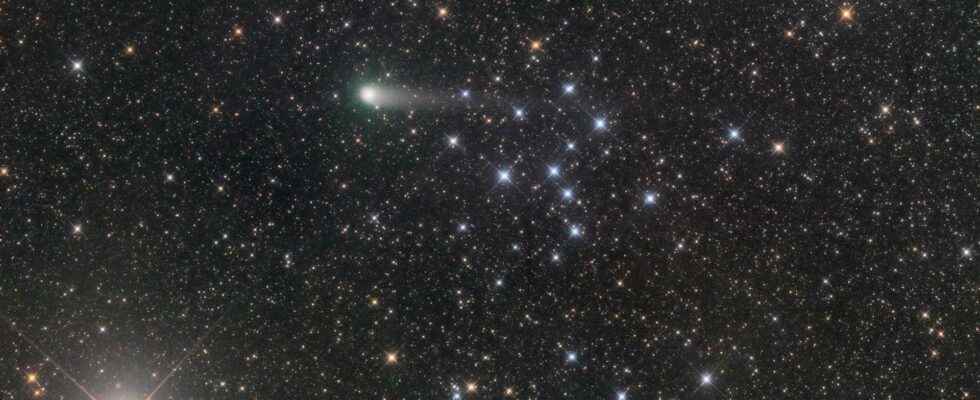A comet discovered 5 years ago will be closest to Earth on July 14. Larger than most of its congeners, C/2017 K2 (PanStarrs) is visible in telescopes. Its activity and luminosity should increase in the coming weeks as it approaches the Sun.
You will also be interested
[EN VIDÉO] One minute to understand comet Bernardinelli-Bernstein The largest comet ever detected will soon cross the Solar System, its diameter reaches 100 kilometers!
When this comet was discovered in 2017 via the PanStarrs program in Hawaii, it was some 2.4 billion kilometers from us, between Saturn and Uranusi.e. 16 astronomical units — 16 times the distance between Earth and the Sun — and yet it was already shining. That she shows herself as active at such a great distance from thestar which warms it, the Sun, surprised the astronomers who subsequently awarded it the palm of the furthest active comet ever observed, since delighted by the gigantic Bernadelli-Bernstein whose nucleus is estimated at more than 100 kilometers in diameter!
Five years have passed and now C/2017 K2 (PanStarrs), as it is called, is in the Solar system internal, and soon in the vicinity of the Earth. “Neighbourhood” if it is reported on the scale of ,  because it will still be 270 million kilometers from our planet, this Thursday, July 14. It’s still huge, much more than Mars. The merger will also take place, the day after a Full moon as always dazzling, therefore embarrassing to observe the faintest objects and diffuse like the comets. However, this one could be full of surprises because with a nucleus of an estimated size of some 18 kilometers (observations ofHubble), K2 is a very large piece of ice and dust that ridicules most of its congeners that we see passing. This could well make the difference in the days and weeks to come, as it gets closer to the Sun.
Where is comet C/2017 K2?
C/2017 K2 (PanStarrs) will reach the point of its orbit very elliptical closest to the Sun, the perihelion, on December 19, at 269 million kilometers. Until then, many amateur astronomers and also happy curious people who own a refractor or telescope with a minimum aperture of 150 mm — or know someone who has one — will enjoy the observe this summer and follow, night after night, the evolution of her hair (coma) as well as its tails gas and dust, already impressive and growing. The size of his comawhich forms like a ball of gas around its core, is currently estimated at 130,000 kilometers, and its tail would stretch over 800,000 kilometers.
With a magnitude current greater than 10, C/2017 K2 (PanStarrs) is not visible ateye naked. In any case, not at the moment. The comet continues this week its crossing of the constellation Serpentarius (Ophiucus), visible looking south above Scorpio at the start of the night. It is almost in opposition to the Sun and therefore visible most of the night in an instrument. Subsequently, as the plane of its orbit is almost perpendicular to that of the planets, the plane of the ecliptic, K2 will cut it around July 25 and pass, after this date, in the southern celestial hemisphere from where it will be visible for the next few months. Her brightness could increase significantly and become a visible star without an instrument. We are not immune to surprises.
Interested in what you just read?
